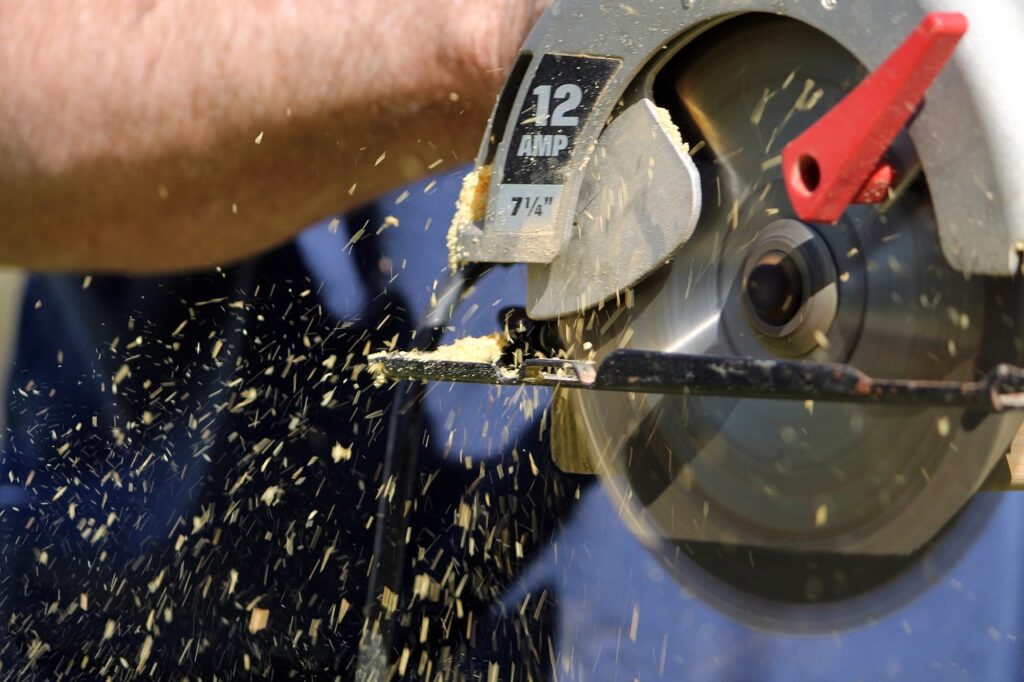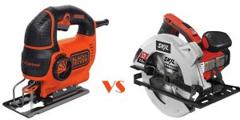Beautiful Plants For Your Interior
Beautiful Plants For Your Interior
Corded circular saws are powered by an electrical cord, while cordless circular saws use a battery-powered motor. Corded saws offer more power and are generally more reliable, while cordless saws are more portable and convenient.
When it comes to circular saws, there’s always been a debate between corded and cordless. After all, both have their advantages and disadvantages. As someone who has been using circular saws for years, I can tell you that it’s important to understand the differences between the two so you can make an informed decision about which saw is best for your needs.
So what’s the difference between the two? A corded circular saw is powered by electricity and has greater power, speed, and torque than a cordless version. However, it also tends to be heavier. A cordless circular saw, on the other hand, is powered by a battery and therefore is lighter and more portable. But its power and speed are limited compared to a corded saw.
In this blog, I’ll discuss the main features of a corded and a cordless circular saw, their pros and cons, and ultimately, what type of saw I’d recommend.
If you’re looking for a powerful, reliable saw to tackle any job, a corded circular saw is the way to go. Corded saws offer significantly more power, torque and speed than their cordless counterparts, giving you the power and control you need for any task. Here are the main features of a corded circular saw:
Speed: Corded circular saws offer impressive speed and power, with adjustable speeds up to 5,000 RPM. This makes them ideal for cutting a range of materials, from soft woods to hard metals.
Power: With more power than a cordless saw, a corded circular saw can cut through thicker materials with ease. Plus, their powerful motors allow them to tackle tougher jobs that a cordless saw can’t handle.
Torque: Corded circular saws come with impressive torque, giving you the control you need for precision cutting. You can also adjust the torque, depending on the material you’re cutting.
Safety: Corded saws come with a number of safety features, like overload protection and a safety switch. This ensures that your saw won’t overheat and that you won’t accidentally start it.
Noise: Corded circular saws are much quieter than their cordless counterparts, making them ideal for all-day jobs. You won’t have to worry about ear protection or disturbing the neighbours.
So, there you have it! Corded circular saws offer more power, torque and speed than cordless saws, making them the go-to choice for serious DIYers and professionals alike. With their impressive features and safety features, they’re sure to make any job easier.
When it comes to cordless circular saws, you can expect all the same features as you would find with a corded saw. However, there are a few key features that make it stand out.
First, the cordless saw offers you the freedom to work anywhere without having to worry about finding a nearby outlet or uncoiling an extension cord. This portability makes it ideal for projects that require you to work in tight spaces or outdoors where there is no access to power.
Second, cordless saws are typically lighter than their corded counterparts, making them easier to maneuver. This is especially helpful when cutting long pieces of material or making detailed cuts.
Third, cordless saws often have more adjustable features and speed settings than corded saws. This allows you to tailor your saw to the specific material you’re working with, giving you a more precise cut.
Finally, many cordless saws now come with brushless motors, which have a longer life and require less maintenance than traditional motors.
All these features make cordless circular saws a great choice for a variety of projects. Whether you’re building a new deck or trimming a hedge, you’ll find that a cordless saw offers the perfect combination of power and portability.
When it comes to power, corded circular saws are more powerful and deliver more torque than their cordless counterparts. They are heavier and more expensive, but they are also faster and can cut through more materials. On the other hand, cordless circular saws are lighter and more portable, but they don’t offer the same power. They are also slower and generally more expensive, but they are great for jobs that require portability and convenience.
In terms of weight, corded saws are generally heavier than cordless saws, making them better suited for larger projects that require heavier-duty materials. Cordless saws are lighter and more portable, and can be used for smaller projects or in tight spaces where a corded saw would be too cumbersome.
When it comes to speed, corded saws are generally faster and able to cut through materials more quickly than cordless saws. However, cordless saws are still quite capable and can be used on a variety of materials.
Finally, in terms of cost, corded saws are generally more expensive than cordless saws. However, the cost of corded saws can be offset by the increased power and speed they offer, and the fact that they are able to cut through a wider range of materials.
Overall, corded and cordless circular saws offer a lot of differences in terms of power, weight, speed, and cost, and the choice between the two depends on the project and the materials being cut.
Using a corded circular saw is both an ideal and a challenging choice for many DIYers. On the one hand, corded saws are incredibly powerful and can make your projects easier. On the other hand, they can be difficult to manage and lack the portability of cordless models.
The main benefit of using a corded circular saw is the unlimited power and torque it provides. Corded saws are able to cut through wood, plastic, and metal with ease. This makes them ideal for larger projects and tougher materials. If you’re looking for a powerful saw that can handle anything you throw at it, corded is the way to go.
Another pro of using a corded circular saw is that they are often more affordable than their cordless counterparts. This can make them a great choice for DIYers on a budget.
The biggest con of using a corded saw is the lack of portability. The saw must always be plugged into an outlet, so you won’t be able to take it with you if you’re working on a job site or away from the house. This can be a major inconvenience, especially if you’re working on a larger project.
In addition, corded saws can be difficult to manage, especially if you’re working with longer pieces of material. The cord can get in the way of your work and can be a safety hazard.
Overall, there are both pros and cons of using a corded circular saw. Consider your needs and budget when deciding which type of saw is right for you.

When it comes to circular saws, cordless saws offer a lot of advantages; however, they also have some drawbacks. The pros of using a cordless circular saw are that they are portable, lightweight and easy to use due to the lack of a cord. Cordless saws also provide increased safety due to their lack of cord, which eliminates the potential of tripping over and getting tangled in a cord. Additionally, they are much more environmentally friendly since they don’t require a power source.
On the other hand, the cons of using a cordless circular saw are that they have shorter battery life than corded saws, meaning you’ll have to keep track of your battery and recharge it often. Additionally, they require more maintenance since you’ll need to clean the battery terminals and brushes regularly to keep them in good condition. Finally, cordless saws are typically more expensive than corded saws.
Overall, whether you choose a corded or cordless circular saw will depend on your individual needs and preferences. If you’re looking for a saw that’s lightweight, portable, and easy to use, a cordless saw is a great option. However, if you’re looking for a saw that doesn’t require frequent recharging, a corded saw may be the better choice.
If you are looking for a circular saw and can’t decide between a corded and a cordless model, we recommend that you go with a cordless model. Cordless saws are quiet and lightweight, making them easier to maneuver and transport. Plus, they come with interchangeable batteries so you can use them for extended periods of time without having to stop to recharge the battery.
Additionally, cordless saws tend to be more powerful than corded saws, so you can get more jobs done in a shorter amount of time. They also run at a lower RPM, which helps to reduce kickback and makes them safer to use.
Of course, cordless saws are more expensive than corded saws, so if you’re looking for a cheaper option, then a corded saw may be the way to go.
Overall, cordless saws are preferred by most professionals because they are more powerful, easier to use, and safer than their corded counterparts. They may be a bit pricier, but they are worth the investment if you plan on using the saw frequently.

Corded circular saws are powered by electricity and require a power cord to be plugged into an outlet. Cordless circular saws, on the other hand, are powered by a rechargeable battery and don’t need to be plugged in. Corded saws have more power, but cordless saws offer more convenience and portability.
The main advantage of a corded circular saw is its power. Its motor is typically more powerful than that of a cordless saw, meaning it can make deeper cuts and handle tougher material. Additionally, you don’t have to worry about running out of power or recharging the battery. This makes it ideal for extended or intensive use, such as on a construction site.
It depends. Generally speaking, cordless circular saws can be just as powerful as their corded counterparts, but the power and run time of the cordless saw will depend on the battery. If you need a saw with a lot of power and long run time, it’s best to opt for a corded one.
On average, cordless circular saws cost more than corded ones. The prices range from around $75 to $300. However, the extra cost of a cordless saw is often worth it, as they provide more freedom of movement and convenience when using them.